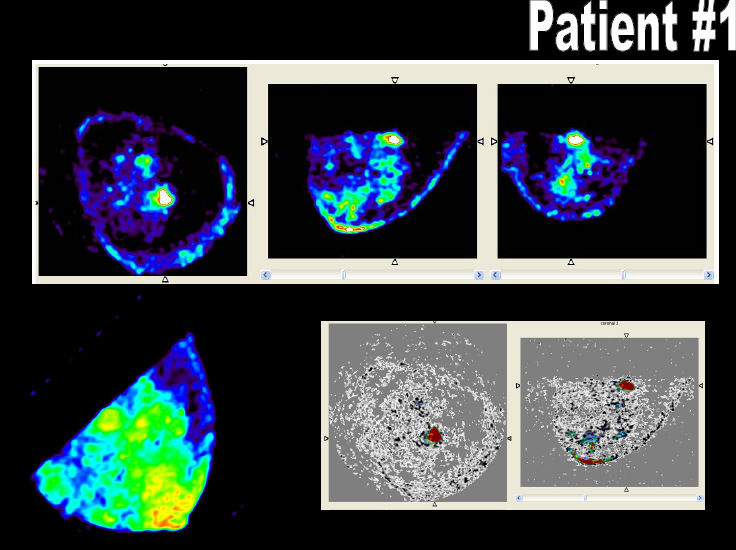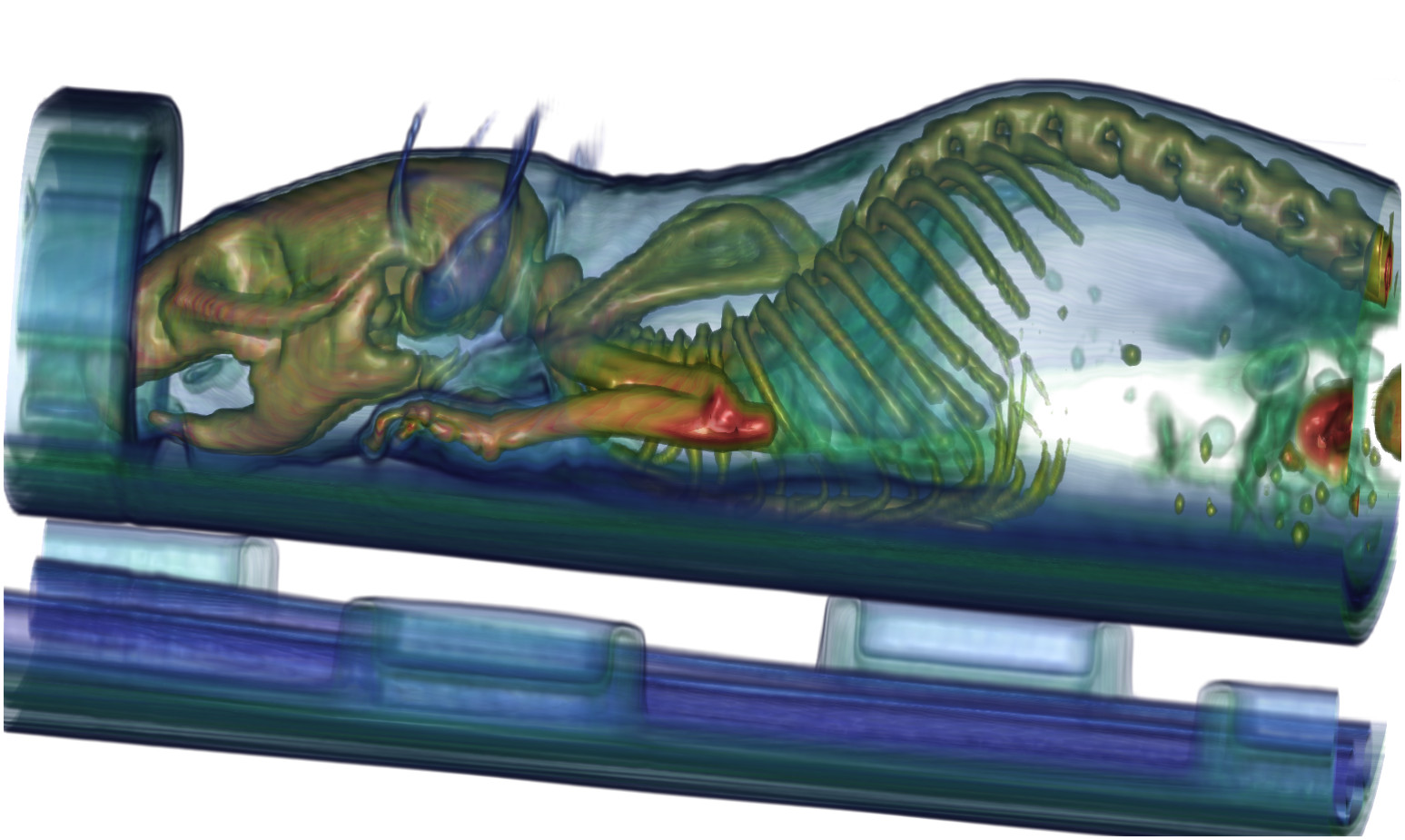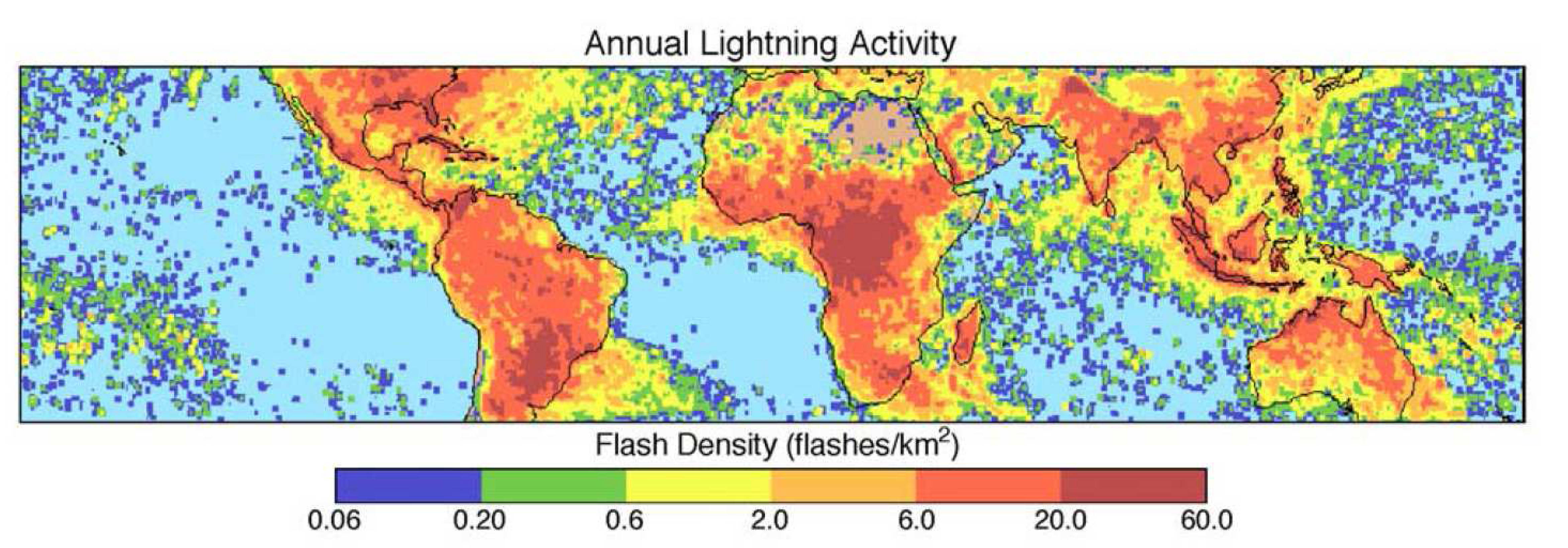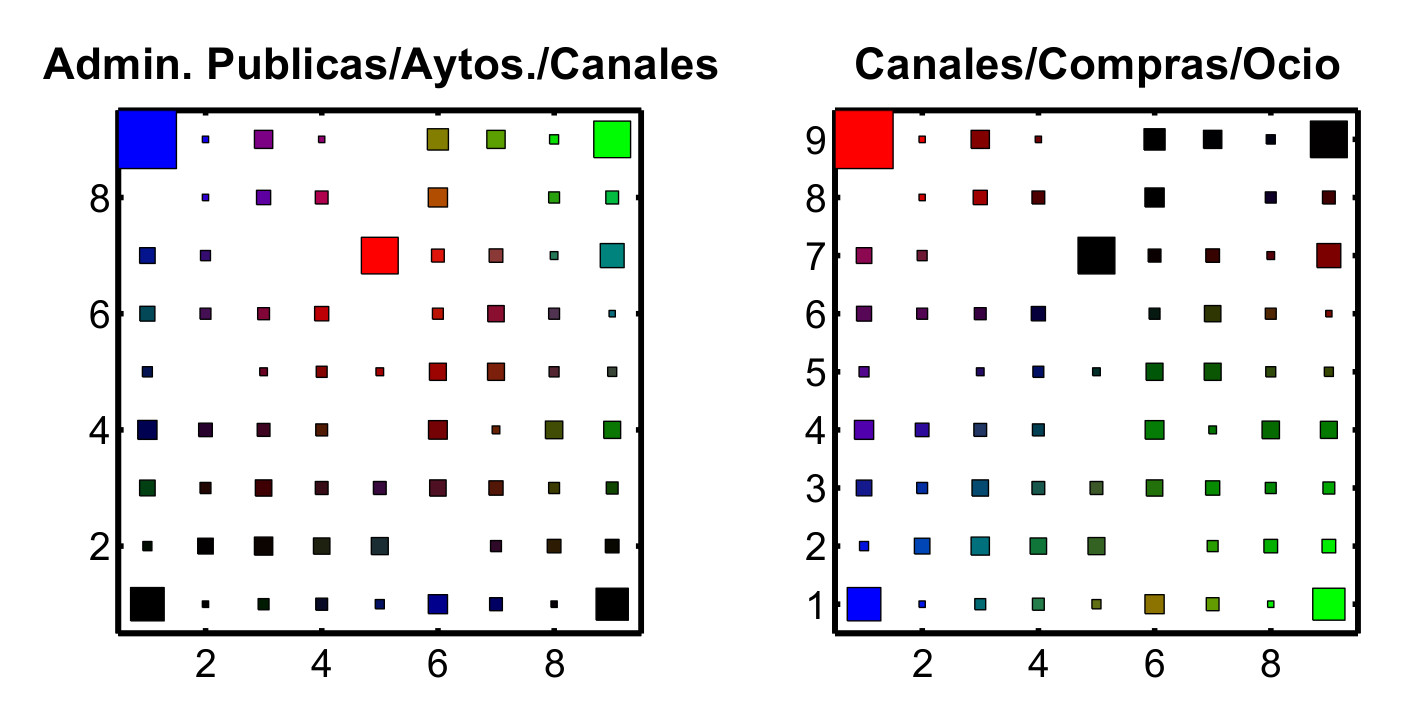My research interests
I develop my research activity in the Group of detectors for molecular imaging at the
Institute of Instrumentation for Molecular Imaging (i3M) which is a center participated by
the Spanish National Research Council (CSIC) and the Politechnical University of Valencia (UPV). It is located at the Campus the Vera of the UPV.
I am interested in the development of numerical models to understand or describe physical systems.
Here I briefly describe some research projects I've been involved in as breast PET imaging, CT imaging,
FDTD modeling or Self Organizing Maps. I also include some references to scientific journals where the results of these
research are explained in detail.
Dedicated breast PET imaging

|
The specificity of PET systems in the detection tumoral lesions outperforms that of conventional x-ray mammography. This has the potential to reduce the number of unnecessary biopsies. However, the cost and lack of resolution of whole body PET have hampered their use in screening applications. Dedicated PET systems place a high resolution detector close to the breast, which reduces the size of the detector and improves its sensitivity. The sensitivity and spatial resolution of dedicated breast PET will allow the diagnose of breast cancer at early stages since lesions smaller than 1 cm can be detected. I was focused on the evaluation of the performance of a dedicated breast PET, and also on the development of image corrections specific for breast PET systems. |
-
Design and evaluation of the MAMMI dedicated breast PET Medical Physics
39 (9):5393 (2012)
-
Attenuation correction without transmission scan for the MAMMI breast PET
Nucl. Instr. and Methods - A 648
:S75-S78 (2011)
- Minimization of parallax error in dedicated breast PET IEEE Transactions on Nuclear Science 60 (2):739-745 (2013)
Up
PET/SPECT/CT preclinical imaging

|
The combination of multiple image modalities into a single scanner has revolutionized the research in medical physics. The Albira trimodal PET/SPECT/CT scanner for small animals permits the combination of PET and SPECT functional images with the anatomical information provided by CT. Here I was focused on the development and evaluation of the Albira's CT subsystem. At present I am also interested in the development of efficient iterative algorithms for CT image reconstruction that cut down the dose delivered to the animal under study. |
-
A small animal PET/SPECT/CT imaging system
Medical Physics
40 (5):051906 (2013)
- EM tomographic image reconstruction using polar voxels Journal of Instrumentation 8 :C01004 (2013)
Up
Finite Difference in Time Domain (FDTD) modeling of Extremely Low Frequencies in the Earth-ionosphere cavity
|
The small absorption of extremelly low frequency (ELF) signals when propagate through the Earth-ionosphere cavity allows them to circle the Earth several times before their total attenuation. Electrical activity generated during storms excites this cavity. The measurement of ELF power spectrum provides with information of the global lightning activity and the electrical properties of the atmosphere, which can be seen as a global climate indicator. Our goal was the development of an FDTD numerical model that helped to explain the ELF power spectrum experimental measurements. |

|
-
Finite difference time domain simulation of the Earth-ionosphere resonant cavity: Schumann resonances
IEEE Transactions on Antennas and Propagation 53
(4):1535-1541 (2005)
- Numerical analysis of ionosphere disturbances and Schumann mode splitting in the Earth-ionosphere cavity Journal of Geophysical Research - Space Physics 113 :A09301 (2008)
Up
Self Organizing Maps to analyse the usage of web portals

|
The aim of this work was the evaluation of several strategies based on neural networks to analyse the usage of web sites. We compared the performance of clustering methods as k-means with supervised and unsupervised neural networks approaches like Adaptive Resonance Theory and Self-Organizing Maps (SOM). I was in charge of the development of tools based on the SOM for the visual analysis of the behaviour of web users. |
-
Web mining based on Growing Hierarchical Self-Organizing Maps: Analysis of a real citizen web portal
Expert Systems with Applications 34
(4):2988-2994 (2008)
- Studying the feasibility of a recommender in a citizen web portal based on user modeling and clustering algorithms Expert Systems with Applications 30 (2):299-312 (2006)